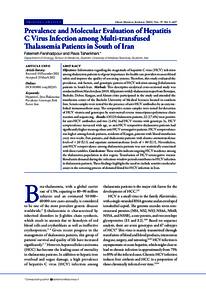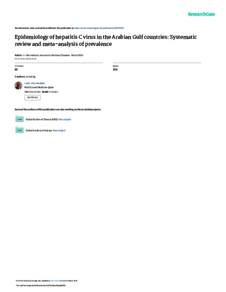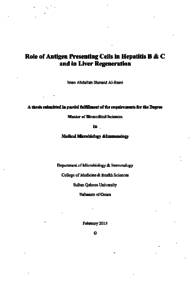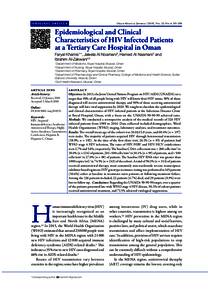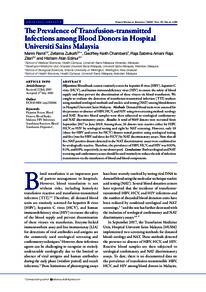Document
Prevalence and molecular evaluation of hepatitis C virus infection among multi-transfused thalassemia patients in South of Iran.
Identifier
DOI 10.5001/omj.2022.85
Contributors
Taherkhani, Reza., Author
Publisher
Oman Medical Specialty Board.
Gregorian
2022-09
Language
English
English abstract
Objectives: Information regarding the magnitude of hepatitis C virus (HCV) infection
among thalassemia patients is of great importance for health care providers to assess blood
safety and improve the quality of screening systems. Therefore, this study evaluated the
prevalence, risk factors, and genotypic pattern of HCV infection among β-thalassemia
patients in South Iran. Methods: This descriptive-analytical cross-sectional study was
conducted from March to June 2019. All patients with β-thalassemia major from Borazjan,
Bushehr, Delvar, Kangan, and Ahram cities participated in the study and attended the
transfusion center of the Bushehr University of Medical Sciences located in southern
Iran. Serum samples were tested for the presence of anti-HCV antibodies by an enzyme linked immunosorbent assay. The seropositive serum samples were tested for detection
of HCV viremia and genotypes by semi-nested reverse transcriptase-polymerase chain
reaction and sequencing. Results: Of 125 thalassemia patients, 22 (17.6%) were positive
for anti-HCV antibodies and two (1.6%) had HCV viremia with genotype 3a. HCV
seroprevalence increased with age, so anti-HCV seropositive thalassemia patients had
significantly higher mean age than anti-HCV seronegative patients. HCV seroprevalence
was higher among female patients, residents of Kangan, patients with blood transfusion
every two weeks, Fars patients, and thalassemia patients with alanine aminotransferase
levels of < 20 IU/L and aspartate aminotransferase levels of > 80 IU/L. Nevertheless,
anti-HCV seroprevalence among thalassemia patients was not statistically associated
with these variables.Conclusions: These results indicate ongoing HCV incidence among
the thalassemia population in this region. Transfusion of HCV-seronegative viremic
blood units donated during the infectious window period contributes to HCV infection
in thalassemia patients. These findings highlight the need to include sensitive molecular
assays in the screening process of donated blood for HCV infection in Iran.
Member of
Resource URL
Category
Journal articles

